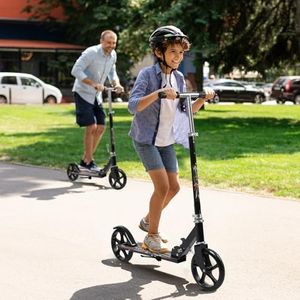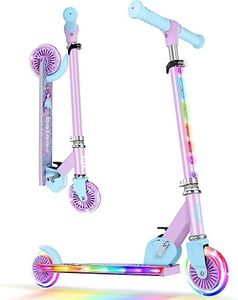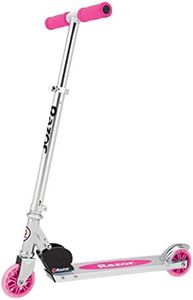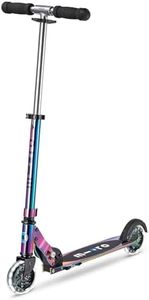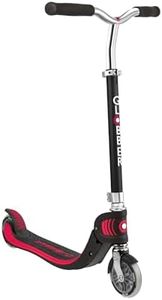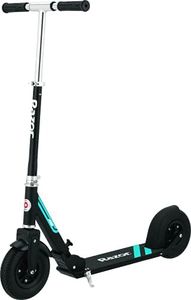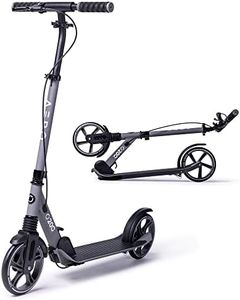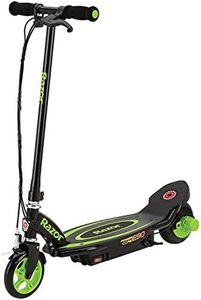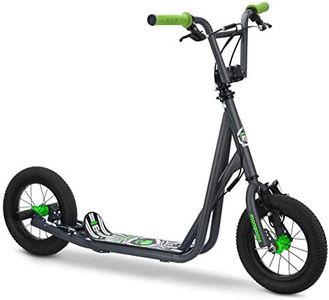We Use CookiesWe use cookies to enhance the security, performance,
functionality and for analytical and promotional activities. By continuing to browse this site you
are agreeing to our privacy policy
10 Best Kids Scooters
From leading brands and best sellers available on the web.By clicking on a link to a third party's website, log data is shared with that third party.
Buying Guide for the Best Kids Scooters
Choosing the right kids scooter involves understanding your child's age, skills, and where they'll usually ride. It's not just about picking the brightest color or coolest design—safety, comfort, and ease of use are crucial. By looking closely at important features, you'll be able to pick a scooter that helps your child learn balance, boosts their confidence, and lets them have fun safely.Wheel Number and ConfigurationThe number and arrangement of wheels on a kids scooter affects its stability and ease of use. Younger children often start with three-wheeled scooters—either two wheels in front and one behind or vice versa—which provide more balance and are easier to stand on. Older or more coordinated kids may prefer two-wheeled scooters, which are lighter and can go faster, but take a bit more balance. Matching the scooter to your child's skill level is key: for beginners and younger kids, go for three wheels; for older or more practiced children, two wheels can add some excitement.
Handlebar Height and AdjustabilityThe height of the handlebar is important for both comfort and control. A handlebar that's too high or too low can be awkward and less safe. Many kids scooters have adjustable handlebars so that they can 'grow' with your child, lasting through several growth spurts. For best comfort, the handlebar should be about waist-high when your child stands on the scooter. Choosing an adjustable handlebar gives you flexibility over time and ensures a safer ride.
Weight CapacityThis is the maximum weight the scooter can safely support. It's important because using a scooter beyond its recommended weight limit can make it unsafe or damage it. Kids scooters come rated for certain weight ranges, typically based on age and the strength of the materials. Make sure to check this number and choose a scooter that can handle your child's current weight, with a little room to grow.
Deck Size and GripThe deck is the part of the scooter where your child stands. A wider deck gives more stability for smaller children still learning to balance, while a narrower deck lets experienced kids maneuver more easily. The deck should also have good grip so your child doesn't slip. Consider your child's age and experience—more width and grip for beginners, and a slim deck with sufficient grip for those who are more agile.
Brake TypeScooters commonly come with either a rear foot brake, which is pressed down on the back wheel, or a hand brake. Rear foot brakes are simple and reliable, especially for younger kids, while hand brakes may be found on some two-wheelers and can be easier for older children to get accustomed to, especially if they also ride a bicycle. Choose the brake type your child will feel most confident and safe with—hang brakes are not necessary for beginners, while older or more adventurous riders might appreciate them.
Folding and PortabilitySome scooters are designed to be folded for easy carrying or storing. This is particularly helpful if you’ll be taking the scooter on trips, to parks, or need to store it in small spaces. If you’ll be transporting the scooter often or using public transportation, a lightweight and foldable model makes life easier. If your child will mostly use it at home, portability might be less important.


